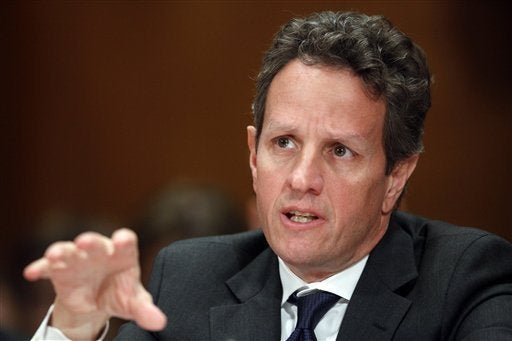
The often-criticized $700 billion bailout, known as the Troubled Asset Relief Program, might end up costing taxpayers less than $50 billion, and could even reap a profit, the Wall Street Journal and New York Times report.
The government never used that full $700 billion, according to the NYT: It pledged $470 billion and actually spent only $387 billion, mostly on aid to AIG, banks and car companies (the rescues of Fannie Mae and Freddie Mac happened before TARP). The program is set to expire this week, and by Treasury Secretary Tim Geithner's estimate, it's ended up in much better shape than initially expected.
Now that AIG has reached a plan to repay its government loans and phase out government ownership, Geither, who had a Thursday briefing with Obama, has estimated that the TARP program will prove to be a good investment. The NYT notes, though, that in order for taxpayers actually to make money on the deal, the Detroit car companies and AIG (which received the biggest rescue) will all have to remain profitable.
Despite its apparent success, TARP remains a political liability. As the NYT says, fewer than 3 in 10 Americans believe it was necessary to prevent financial collapse. "This is the best federal program of any real size to be despised by the public like this," Douglas J. Elliott, of the think tank Brookings Institution, told the newspaper.
As Simon Johnson writes in the NYT, the nature of the program's implementation has hurt its popularity: "TARP was an essential piece of a necessary evil -- that is, it saved the American financial system from collapse, but it was put in place in a way that was excessively favorable to the very bankers who had presided over the collapse."
ABC News says that "bailout" is "the dirtiest word in politics." It's rivaled, no doubt, only by "stimulus."